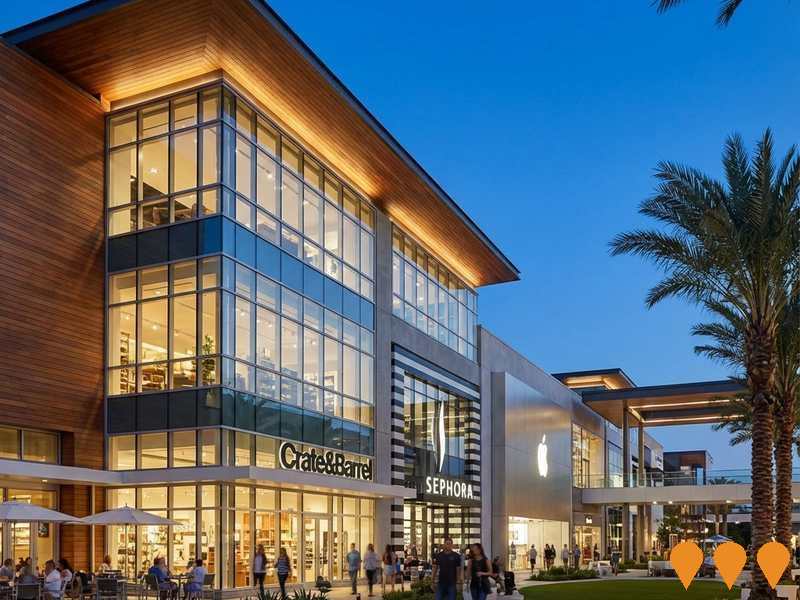Chart Color Schemes
est. as @ -- *
ABS ERP | -- people | --
2021 Census | -- people
Sales Activity
Curious about local property values? Filter the chart to assess the volume and appreciation (including resales) trends and regional comparisons, or scroll to the map below view this information at an individual property level.
Find a Recent Sale
Sales Detail
Population
Sippy Downs lies within the top quartile of areas nationally for population growth performance according to AreaSearch analysis of recent, and medium to long-term trends
AreaSearch's analysis shows Sippy Downs' population was around 12,579 as of Aug 2025. This reflects a growth of 1,035 people (9.0%) since the 2021 Census, which reported a population of 11,544. The change is inferred from ABS' estimated resident population of 12,569 as of June 2024 and an additional 236 validated new addresses since the Census date. This results in a density ratio of 866 persons per square kilometer, similar to averages seen across locations assessed by AreaSearch. Sippy Downs' growth exceeded the SA3 area (7.4%) and non-metro areas, marking it as a growth leader. Overseas migration contributed approximately 53.6% of overall population gains during recent periods, with all drivers including interstate migration and natural growth being positive factors.
AreaSearch adopts ABS/Geoscience Australia projections for each SA2 area, released in 2024 with 2022 as the base year. For areas not covered by this data, and years post-2032, Queensland State Government's SA2 area projections released in 2023 based on 2021 data are adopted. These state projections do not provide age category splits; hence proportional growth weightings from ABS Greater Capital Region projections (released in 2023, based on 2022 data) for each age cohort are applied where utilised. Demographically, non-metropolitan areas nationally are projected to have above median population growth, with the area expected to grow by 2,290 persons to 2041 based on the latest population numbers, recording a gain of 18.1% in total over the 17 years.
Frequently Asked Questions - Population
Development
AreaSearch analysis of residential development drivers sees Sippy Downs recording a relatively average level of approval activity when compared to local markets analysed countrywide
Sippy Downs has seen approximately 24 new homes approved annually. Between FY-21 and FY-25124 homes were approved, with none yet in FY-26. Each year, an average of 9.5 people moved to the area for each dwelling built during these years.
This demand significantly outpaces supply, typically putting upward pressure on prices and increasing competition among buyers. New properties are constructed at an average expected cost of $367,000, which is below regional levels, indicating more accessible housing choices for buyers. In FY-26, $65.6 million in commercial approvals have been registered, suggesting robust local business investment. Compared to the Rest of Qld, Sippy Downs has significantly less development activity, 56.0% below the regional average per person. This constrained new construction usually reinforces demand and pricing for existing dwellings. This activity is also lower than nationally, reflecting market maturity and possible development constraints. New building activity shows 14.0% detached houses and 86.0% medium and high-density housing.
This skew towards compact living offers affordable entry pathways and attracts downsizers, investors, and first-time purchasers, representing a notable shift from the area's existing housing composition of 64.0% houses. The estimated count of 1430 people in the area per dwelling approval reflects its quiet, low activity development environment. Population forecasts indicate Sippy Downs will gain 2,280 residents by 2041. At current development rates, housing supply may struggle to match population growth, potentially heightening buyer competition and supporting price increases.
Frequently Asked Questions - Development
Infrastructure
Sippy Downs has emerging levels of nearby infrastructure activity, ranking in the 36thth percentile nationally
Changes to local infrastructure significantly impact an area's performance. AreaSearch has identified 22 projects likely affecting the region. Notable ones include SOHO Sippy Downs, 45 Sippy Downs Drive High Density Development, Sippy Downs (West) Queensland Fire Department Station, and Sippy Downs - Palmview Local Plan Area. The following list details those most relevant.
Professional plan users can use the search below to filter and access additional projects.
INFRASTRUCTURE SEARCH
 Denotes AI-based impression for illustrative purposes only, not to be taken as definitive under any circumstances. Please follow links and conduct other investigations from the project's source for actual imagery. Developers and project owners wishing us to use original imagery please Contact Us and we will do so.
Denotes AI-based impression for illustrative purposes only, not to be taken as definitive under any circumstances. Please follow links and conduct other investigations from the project's source for actual imagery. Developers and project owners wishing us to use original imagery please Contact Us and we will do so.
Frequently Asked Questions - Infrastructure
UnityWater Infrastructure Program 2023-2027
The major water and wastewater infrastructure investment program, valued at $1.8 billion over 2023-2027, covers the Sunshine Coast and Moreton Bay regions. It includes key components like the Aura and Harmony Program, focusing on treatment plants, pipeline upgrades, and water security to meet the needs of the growing population.
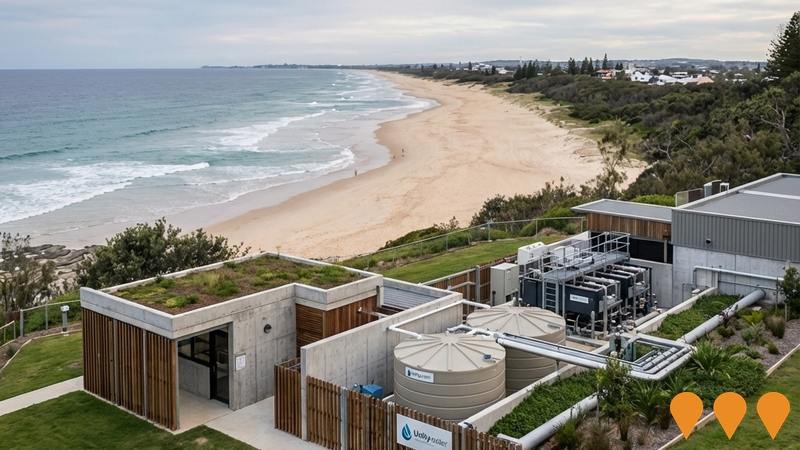
UniSC Sunshine Coast Campus Master Plan Development
The University of the Sunshine Coast (UniSC) is evolving its Sippy Downs campus with a **2023 Campus Master Plan**. This plan provides a strategic framework for future campus development and landscape amenity, focusing on a post-COVID environment. It is an evolution of the 2012 plan and guides future functionality through a **people, movement, and place design lens**, with an emphasis on **sustainability**, **Indigenous culture and knowledge (Design with Country)**, and **enhanced student experience**. The plan includes an extension of the main building axis, development on the northern boundary adjacent to Sippy Downs Drive, and the creation of a new campus heart and outdoor learning spaces. The previous major expansion mentioned in the original record seems to be Stage 2 of the UniSC Moreton Bay Campus (Petrie), which was completed in early 2024, but the masterplan is the current planning for Sippy Downs.
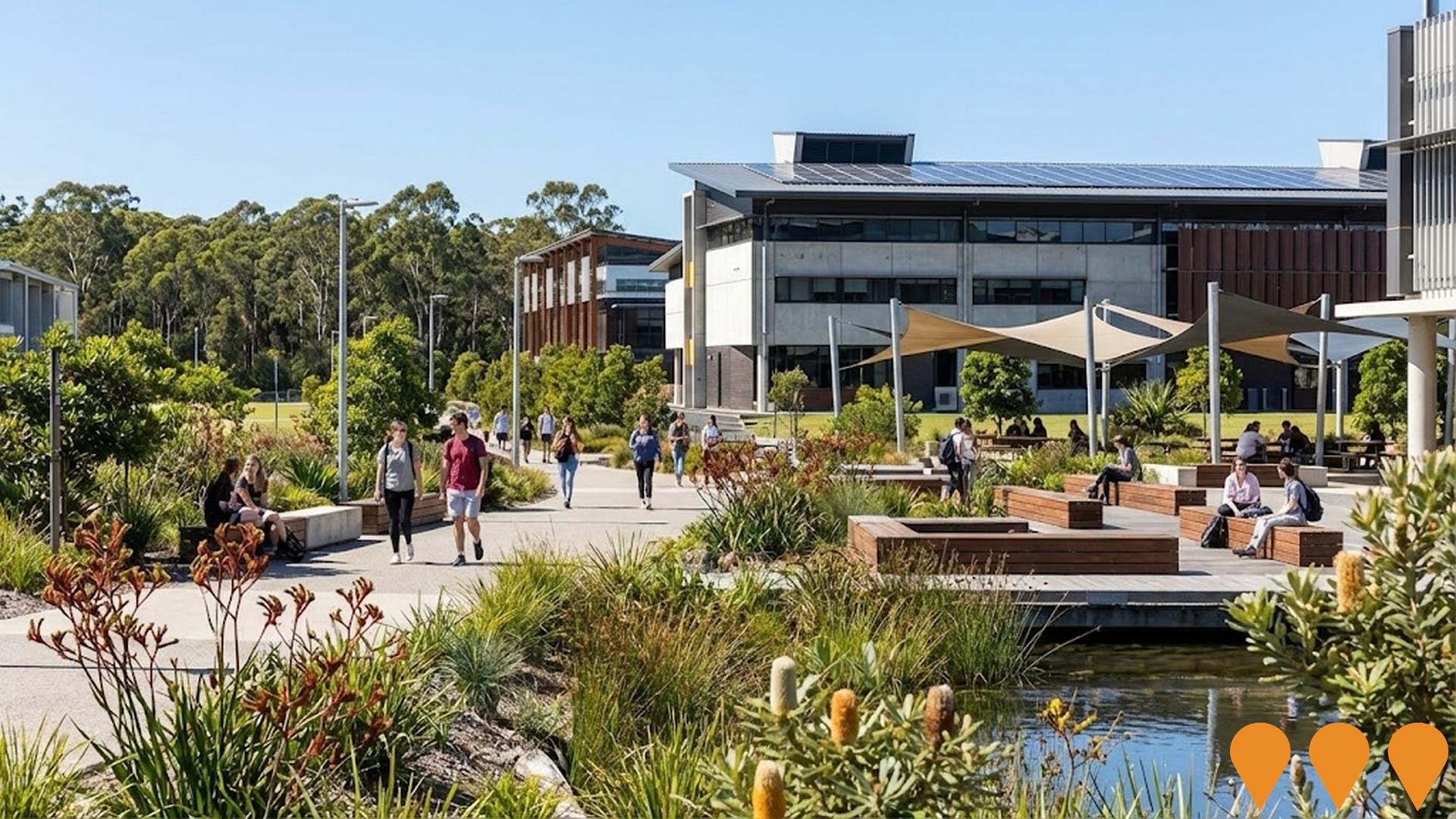
Central Sippy Downs Shopping Centre Development
A 3,556sqm mixed-use centre comprising 2 separate buildings over 2 levels located opposite the University of the Sunshine Coast campus. Anchored by Chipmunks Playland & Cafe, the centre includes commercial tenancies, food retailers, medical suites, a pharmacy, and recreational facilities with tenants including Dominos, Banjos, F45, Sushi Ari, Terry White Chemist, and Athletic Republic training centre. Connected to an existing Coles supermarket via shared driveways.

Sippy Downs - Palmview Local Plan Area
Part of the proposed new Sunshine Coast Planning Scheme currently under public consultation (July 15 - September 19, 2025). The Local Plan Area covers the central Sunshine Coast region east of Bruce Highway and south of Sunshine Motorway, encompassing Sippy Downs and Palmview communities, Mooloolah River National Park, conservation areas, and Lower Mooloolah River Greenspace. Focuses on land use planning, building heights, minimum lot sizes, growth opportunities near University of Sunshine Coast and Sippy Downs Town Centre, while managing constraints including flooding, conservation areas, and extractive resources. Will replace current Sunshine Coast Planning Scheme 2014 if adopted.
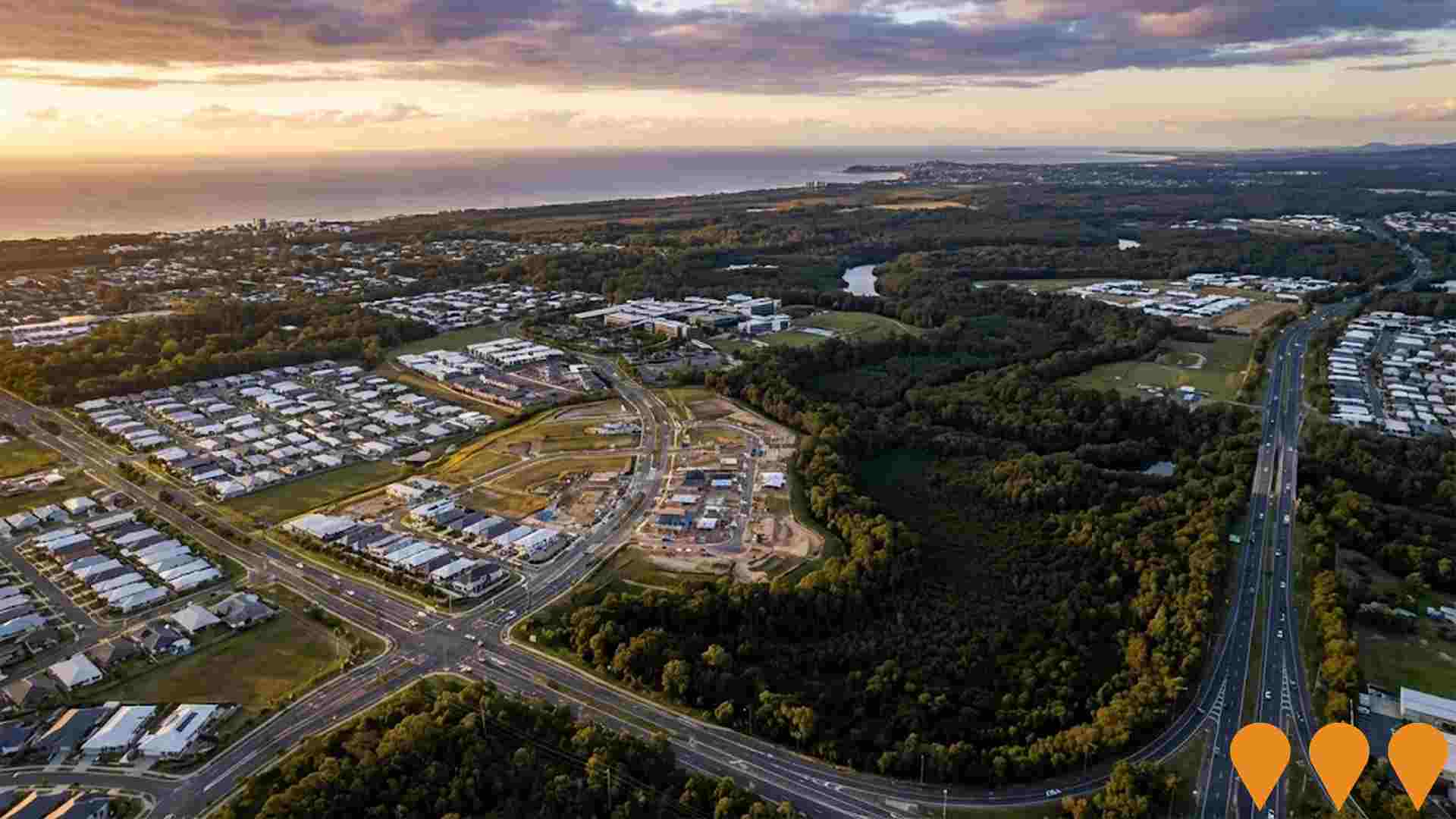
Sippy Downs (West) Queensland Fire Department Station
A new Queensland Fire Department station planned for Sippy Downs West to enhance emergency response capabilities and community safety in the growing Sunshine Coast corridor. Part of the state infrastructure pipeline with estimated value over $10 million.
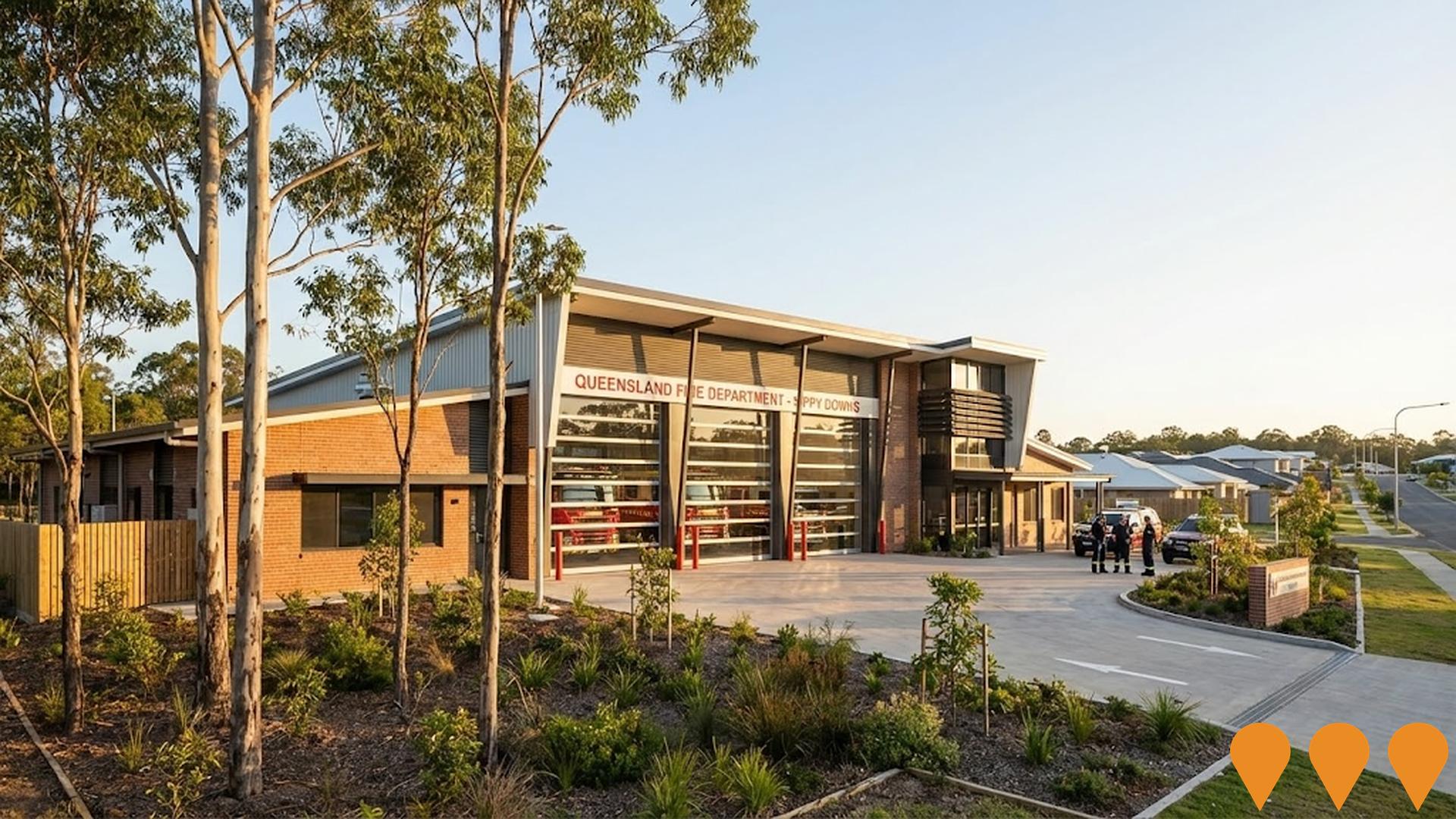
2032 Brisbane Olympic Games Basketball Events Indoor Sports Centre
Proposed indoor sports centre to host basketball events for the 2032 Brisbane Olympic Games. Located adjacent to University of the Sunshine Coast to leverage existing sports and accommodation infrastructure.
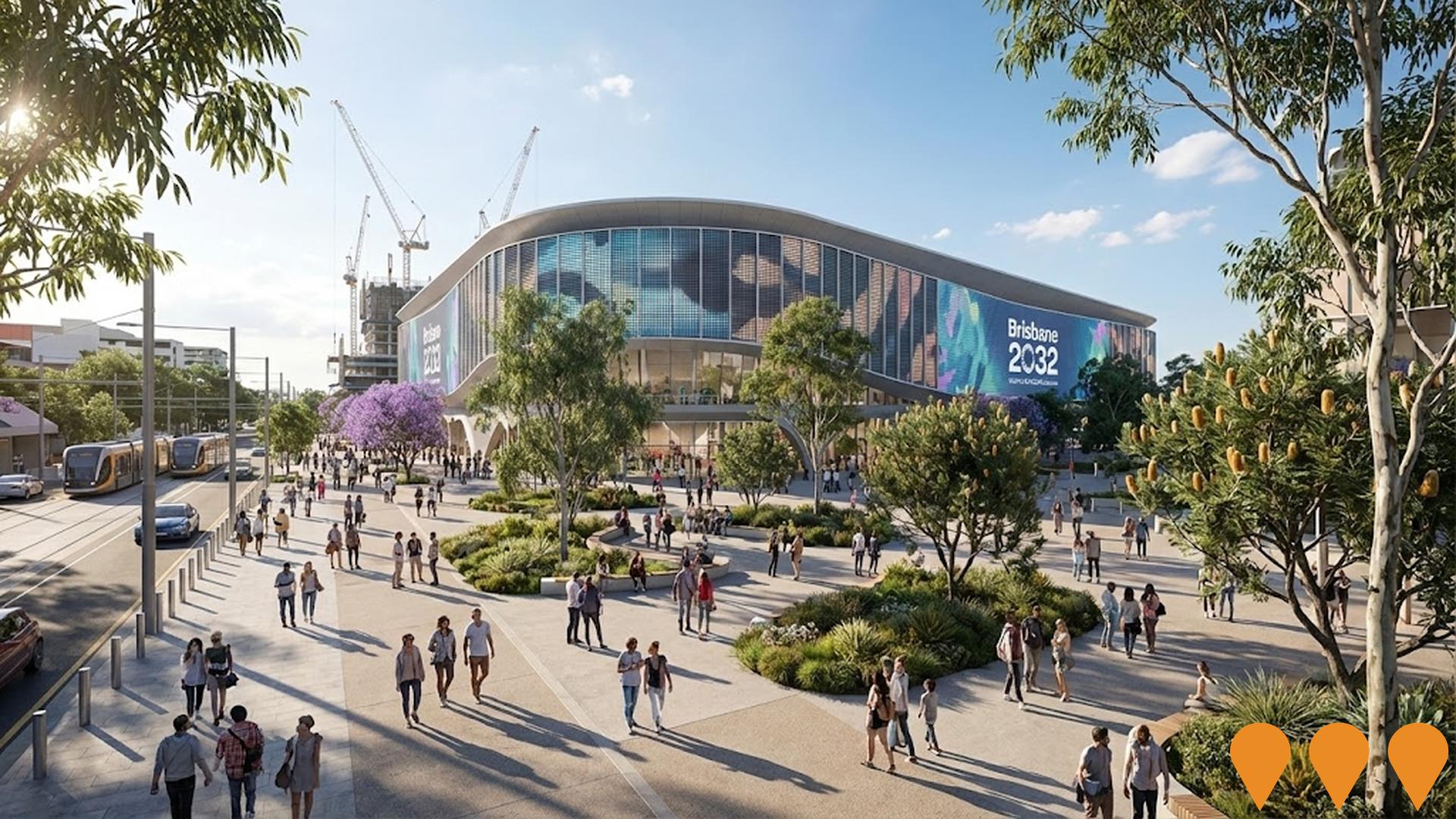
Palmview State Schools Complex
New state-of-the-art primary and secondary schools complex in Palmview, designed to serve the growing residential developments in the area. A new state secondary school opened for Term 1, 2023, with features including modern learning facilities, sports grounds, and community spaces.

HQ Sunshine Coast Mixed Use Development
Mixed-use development in Sippy Downs supporting the growing residential and commercial needs of the university precinct area. Features 46 residential units, commercial offices (1,730sqm), food and beverage outlets (312sqm), childcare centre (120 places), and short-term accommodation. Three distinct buildings with 182 car spaces. Developed by Devcon Property Group with Blackburne Jackson architects.

Employment
AreaSearch assessment positions Sippy Downs ahead of most Australian regions for employment performance
Sippy Downs has a skilled workforce with notable representation in essential services sectors. Its unemployment rate is 2.9%.
As of June 2025, there are 6,986 residents employed, with an unemployment rate of 1.0% lower than the Rest of Qld's rate of 3.9%. Workforce participation stands at 61.9%, slightly higher than the Rest of Qld's 59.1%. Key employment sectors include health care & social assistance, retail trade, and accommodation & food. Retail trade is particularly specialized, with an employment share 1.4 times the regional level, while agriculture, forestry & fishing shows lower representation at 0.9% compared to the regional average of 4.5%.
Despite local opportunities, many residents commute elsewhere for work based on Census data. Over the year ending June 2025, labour force levels in Sippy Downs decreased by 2.3%, with employment declining by 1.4%, leading to a fall in unemployment rate by 0.9 percentage points. Conversely, Rest of Qld saw employment growth of 1.8% and labour force growth of 2.0%, with a slight rise in unemployment rate. Jobs and Skills Australia's national employment forecasts from May 2025 project overall employment growth of 6.6% over five years and 13.7% over ten years. Applying these projections to Sippy Downs' employment mix suggests local growth of approximately 6.7% over five years and 13.8% over ten years, though these are simple extrapolations for illustrative purposes only.
Frequently Asked Questions - Employment
Income
Income levels sit below national averages according to AreaSearch assessment
AreaSearch's latest postcode level ATO data for financial year 2022 shows that income in Sippy Downs is higher than average nationally. The median income is $49,567 and the average income stands at $69,648. This contrasts with Rest of Qld's figures where the median income is $50,780 and the average income is $64,844. Based on Wage Price Index growth of 13.99% since financial year 2022, current estimates would be approximately $56,501 (median) and $79,392 (average) as of September 2025. Census 2021 income data shows that household, family and personal incomes in Sippy Downs rank modestly, between the 23rd and 35th percentiles. Income brackets indicate that the $1,500 - 2,999 earnings band captures 33.6% of the community (4,226 individuals), similar to the metropolitan region where this cohort represents 31.7%. Housing affordability pressures are severe in Sippy Downs, with only 76.5% of income remaining, ranking at the 25th percentile. The area's SEIFA income ranking places it in the 4th decile.
Frequently Asked Questions - Income
Housing
Sippy Downs displays a diverse mix of dwelling types, with a higher proportion of rental properties than the broader region
In Sippy Downs, as per the latest Census evaluation, 64.3% of dwellings were houses, with the remaining 35.7% comprising semi-detached homes, apartments, and other types. This is compared to Non-Metro Qld's figures of 74.1% houses and 25.9% other dwellings. Home ownership in Sippy Downs stood at 22.3%, with mortgaged properties at 38.5% and rented ones at 39.2%. The median monthly mortgage repayment was $1,889, lower than Non-Metro Qld's average of $2,000. The median weekly rent in Sippy Downs was $460, compared to Non-Metro Qld's $465. Nationally, Sippy Downs' mortgage repayments were higher at $1,889 versus the Australian average of $1,863, while rents were substantially higher at $460 compared to the national figure of $375.
Frequently Asked Questions - Housing
Household Composition
Sippy Downs features high concentrations of group households, with a fairly typical median household size
Family households constitute 70.7% of all households, including 29.7% couples with children, 26.9% couples without children, and 12.9% single parent families. Non-family households comprise the remaining 29.3%, with lone person households at 23.0% and group households making up 6.4%. The median household size is 2.6 people, which aligns with the average for the Rest of Qld.
Frequently Asked Questions - Households
Local Schools & Education
The educational profile of Sippy Downs exceeds national averages, with above-average qualification levels and academic performance metrics
Educational qualifications in Sippy Downs lag behind regional benchmarks, with 22.7% of residents aged 15+ holding university degrees compared to the national average of 30.4%. This indicates potential for educational development and skill enhancement. Bachelor degrees are most common at 16.3%, followed by postgraduate qualifications (4.5%) and graduate diplomas (1.9%). Vocational credentials are also prevalent, with 39.1% of residents aged 15+ holding such qualifications – advanced diplomas (11.4%) and certificates (27.7%).
Educational participation is high, with 38.2% of residents currently enrolled in formal education, including 13.8% in tertiary education, 9.9% in primary education, and 8.7% pursuing secondary education. Sippy Downs has three schools with a combined enrollment of 4,363 students, demonstrating above-average socio-educational conditions (ICSEA: 1068). The educational mix includes one primary school, one secondary school, and one K-12 school. The area serves as an education hub with 34.7 school places per 100 residents – significantly higher than the regional average of 20.9 – attracting students from surrounding communities.
Frequently Asked Questions - Education
Schools Detail
Nearby Services & Amenities
Transport
Transport servicing is low compared to other areas nationally based on assessment of service frequency, route connectivity and accessibility
The analysis of public transportation in Sippy Downs indicates there are currently 36 operational bus stops. These stops are served by six distinct routes that together facilitate 956 weekly passenger journeys. The accessibility of transport is deemed good, with residents on average being situated 228 metres from the nearest stop.
On a daily basis, services operate at an average frequency of 136 trips across all routes, which translates to approximately 26 weekly trips per individual stop.
Frequently Asked Questions - Transport
Transport Stops Detail
Health
Health performance in Sippy Downs is lower than average with common health conditions somewhat prevalent across the board, though to a considerably higher degree among older age cohorts
Sippy Downs faces significant health challenges with common health conditions prevalent across all age groups, but to a higher degree among older residents.
Approximately 54% (~6,842 people) have private health cover, which is high compared to other areas. Mental health issues and arthritis are the most common medical conditions, affecting 9.2 and 8.7% of residents respectively. However, 68.2% of residents report having no medical ailments, slightly lower than the 69.0% reported across the rest of Queensland. The area has a higher proportion of seniors (15.3%, or 1,922 people) compared to other areas in Queensland (20.2%). Health outcomes among seniors require more attention due to specific challenges they face.
Frequently Asked Questions - Health
Cultural Diversity
The level of cultural diversity witnessed in Sippy Downs was found to be above average when compared nationally for a number of language and cultural background related metrics
Sippy Downs had a cultural diversity above average, with 11.4% speaking a language other than English at home and 26.4% born overseas. Christianity was the predominant religion in Sippy Downs, comprising 45.1%. Judaism showed an overrepresentation of 0.2%, compared to Rest of Qld's 0.2%.
The top three ancestry groups were English (30.9%), Australian (26.2%), and Scottish (8.2%). Notably, New Zealand had a similar representation at 1.1% (vs regional 1.1%), South African was the same at 0.9%, and Korean showed higher representation at 0.6% (vs regional 0.3%).
Frequently Asked Questions - Diversity
Age
Sippy Downs's young demographic places it in the bottom 15% of areas nationwide
Sippy Downs has a median age of 32 years, which is lower than the Rest of Qld average of 41 years and substantially under the Australian median of 38 years. Compared to Rest of Qld, Sippy Downs has a higher concentration of residents aged 15-24 (21.7%) but fewer residents aged 55-64 (7.1%). This concentration of 15-24 year-olds is well above the national average of 12.5%. Between the 2021 Census and now, the population aged 25 to 34 has grown from 13.6% to 17.1%, while the 5 to 14 age group has declined from 13.0% to 11.1% and the 65 to 74 age group has dropped from 7.0% to 5.9%. By 2041, demographic modeling suggests that Sippy Downs' age profile will evolve significantly. The 25 to 34 age cohort is projected to grow by 52%, adding 1,113 residents to reach a total of 3,266. In contrast, both the 15 to 24 and 5 to 14 age groups are expected to see reduced numbers.


